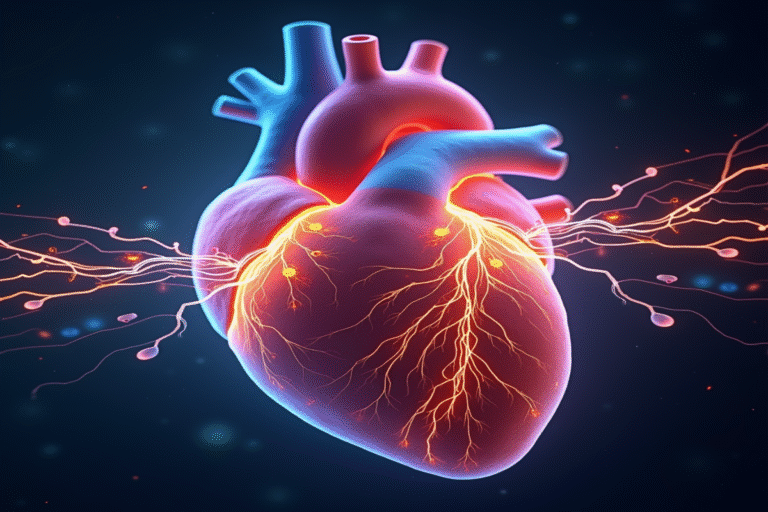Every second of your life depends on a precisely choreographed electrical dance occurring inside your heart—and potassium plays the leading role. While we often associate this mineral with bananas, its most crucial function happens silently within every cell of your heart muscle.
Your Heart: An Electrical Marvel
The average human heart beats about 100,000 times per day, pumping blood through nearly 60,000 miles of blood vessels. This rhythmic contraction isn’t driven by mechanical gears but by electrical impulses traveling through specialized heart cells. At the molecular level, this electrical activity relies on the careful movement of charged particles—ions—across cell membranes.
Potassium, which carries a positive charge, is the most abundant positively charged ion inside your cells. Its concentration inside cells is about 30 times higher than outside, creating an electrical gradient essential for your heart’s function.
The Potassium-Powered Heartbeat
Every heartbeat begins with a surge of electrical activity that causes heart muscle cells to contract. This process involves a precisely timed opening and closing of specialized protein channels that let ions flow in and out of cells. Here’s where potassium is vital:
- Resting state: When heart cells are relaxed, potassium channels are open, allowing potassium to flow out of cells, keeping the inside of the cell electrically negative.
- Contraction phase: Different ion channels open, causing a quick shift in electrical charge that triggers the cell to contract.
- Repolarization: After contraction, potassium channels open widely, letting potassium rush out of the cells, restoring the negative charge and preparing the heart for the next beat.
This cycle repeats with incredible precision, largely thanks to potassium’s dependable flow through dedicated channel proteins in cell membranes. Without enough potassium, this electrical reset doesn’t work properly, disrupting your heart’s rhythm.
When Potassium Balance Goes Awry
Your body keeps blood potassium levels within a very narrow range—typically between 3.5 and 5.0 millimoles per liter. Even small changes can have a major impact on heart function:
- Low potassium (hypokalemia): When potassium drops below normal, heart cells can’t repolarize properly. This may cause arrhythmias, palpitations, and, in severe cases, cardiac arrest. On an electrocardiogram (ECG), low potassium shows up as “U waves” and flattened T waves.
- High potassium (hyperkalemia): Too much potassium interferes with electrical signaling, which can cause dangerous heart rhythm problems. The ECG may show “peaked T waves” as an early warning sign.
The Numbers Are Staggering
Consider this: a single heartbeat involves billions of potassium ions passing through millions of specialized channel proteins. Each potassium channel allows about 100 million ions to move through per second. This molecular traffic is so precise that your heartbeat maintains its regular rhythm throughout your life.
Fueling Your Heart’s Electrical System
Unlike some nutrients, your body cannot make potassium—it must come from your diet. The recommended daily intake for adults is 2,600–3,400 mg. While bananas (about 422 mg per medium fruit) are famous for their potassium, many foods have even more:
- Baked potato with skin: 941 mg
- Avocado (medium): 708 mg
- White beans (1 cup, cooked): 829 mg
- Spinach (1 cup, cooked): 839 mg
- Salmon (6 oz): 730 mg
Potassium from food is almost always better than supplements, as the body absorbs and uses it more efficiently in its natural form.
A Microscopic Miracle
The next time you feel your heartbeat, remember the remarkable ionic ballet happening at the microscopic level. Trillions of potassium ions are rushing through engineered channels with split-second timing—a biological symphony that keeps you alive.
This delicate electrochemical process, refined over millions of years of evolution, stands as one of nature’s most elegant engineering feats. From the atomic to the anatomical scale, your heart’s relationship with potassium shows how even the most basic processes of life are filled with extraordinary complexity and wonder.





